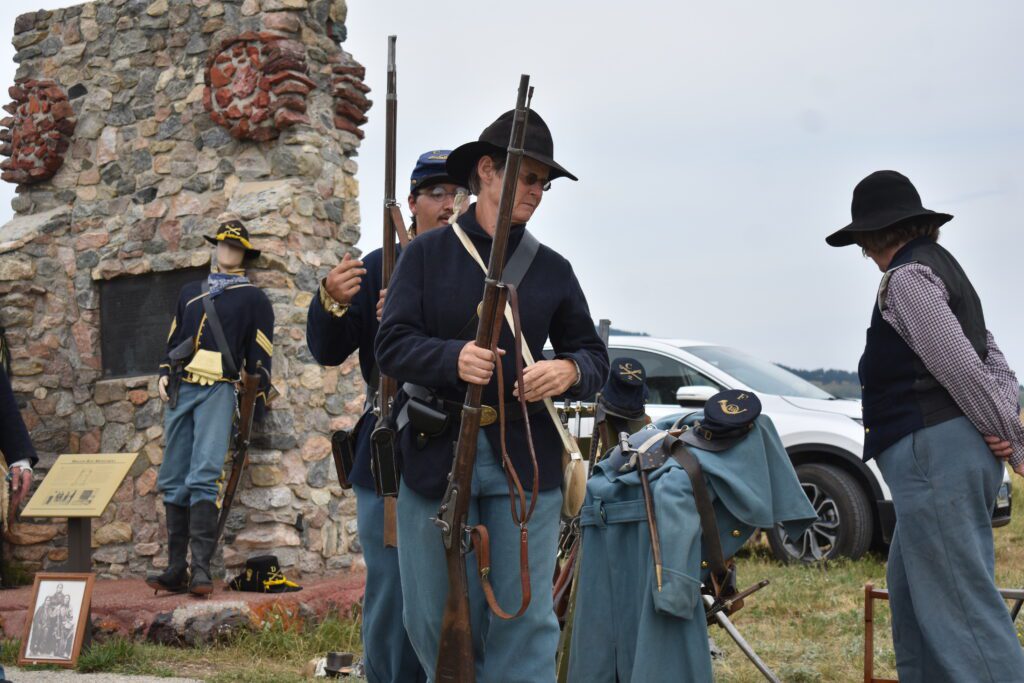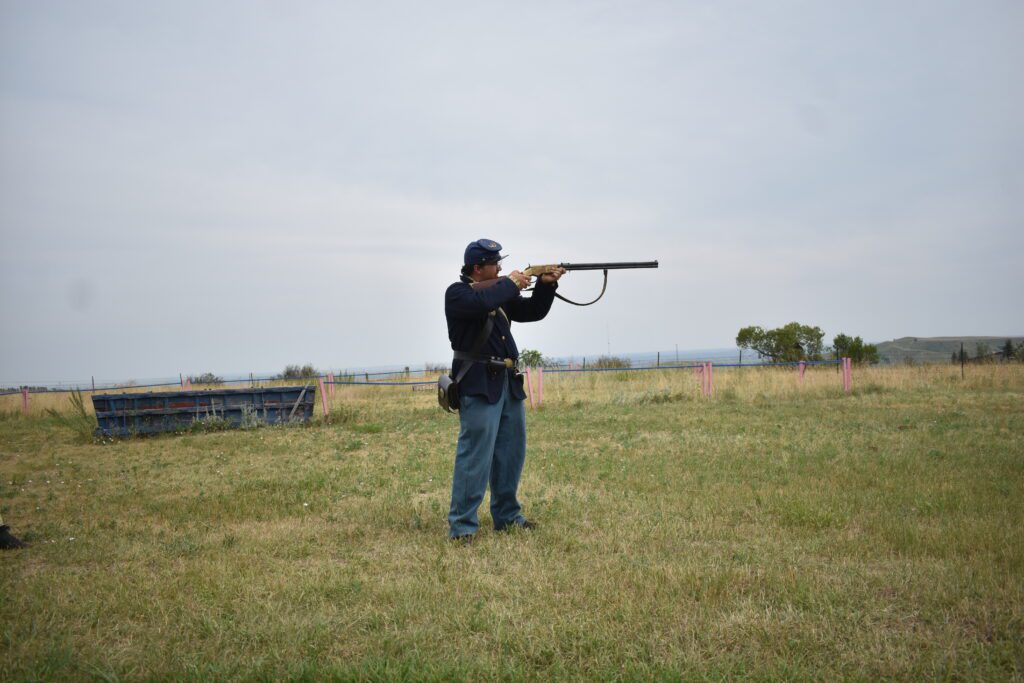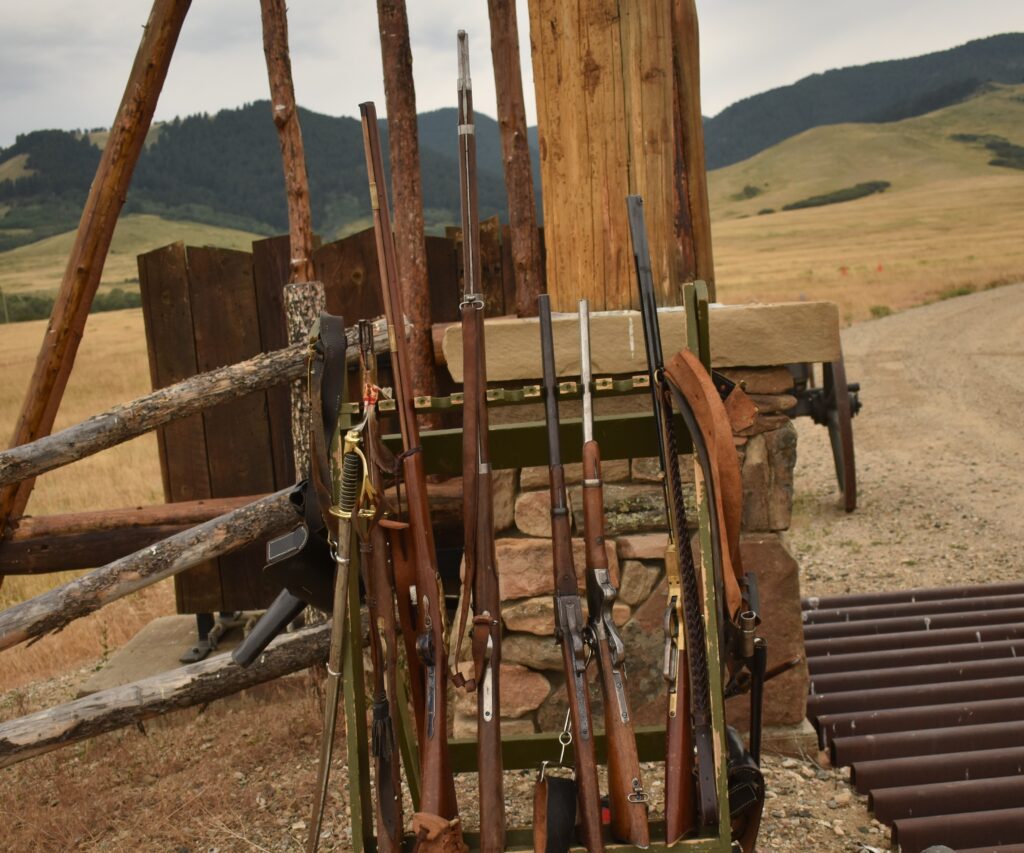News
History: Technology on the Frontier
Published
1 year agoon
By
cvannoy
Fort Phil Kearny was manned from 1866-1868. Famous battles near the Fort were the Fetterman Massacre and the Wagon Box Fight.
This From the Wyoming Press, Evanson, Wyoming February 10, 1900 – On Dec. 21,1866, Fort Phil Kearney, commanded by Col. Henry Carrington, was the extreme outpost of the government In the Bighorn Mountain region of the west. The post was 200 miles from telegraph lines and in an isolated position. On Dec. 21 the Indians made an attack upon the wood train a few miles north of the fort. A detachment of troops under Lieut. Col. Fetterman including two officers and 78 men, and a number of civilians, made a dash from the fort for the purpose of protecting the wood train, when about four miles from the fort they were surrounded by several thousand Indians and every man of the detachment was killed. The officers killed were Lieut. Col. Fetterman, Capt. F. H. Brown and Lieut. Drummond.

The Indians were victorious on that day, killing all the soldiers and civilians. But, seven months later, on Aug. 2, 1867, the Indians again attacked a wood train, this time on a hill near where Story now stands. In this instant, the soldiers were victorious. In a mere eight months’ time, what made the difference in the soldier’s victory at the Wagon Box Fight? Newer and better rifle technology.
At the Wagon Box Fight Anniversary talk on August 2, the Fort Phil Kearny Regulars demonstrated how much faster the new rifles were, as opposed to having to load the muzzle loader, which nearly always had to be loaded standing upright, which exposed the rifleman to unfriendly fire.

This from The Sheridan Post, August 1, 1919 – Saturday, August 2, is the 52 anniversary of the Wagon Box fight which occurred on August 2, 1867 and which has been characterized by General H.B. Carrington, in command earlier at Fort Phil Kearny, as without a parallel in history for the desperateness of the fight and its marvelous victory, and on tomorrow the anniversary of this famous fight will be celebrated on the battle ground located about a mile from Story between Big and Little Pineys.
Sergeant Gibson has been sent here by the Oregon Trail commission acting under authority of an act of the legislature which provided fur the marking of historic spots in Wyoming. There has been some little difference of opinion as to the exact location of this battle ground and the matter is now to be determined definitely so that later a monument may be erected there.

This famous battle was perhaps the most remarkable in the history of Indian warfare. A little band of less than thirty soldiers and civilians, surrounded by yelling hordes of Indians fortified themselves in wagon boxes and for hours held the reds at bay. The whites lost but one man killed and a few wounded and as the Indians carried off their dead, their exact loss was never known, but the Indians admit that it ran into the thousands. (This has been questioned, according to the historians at the 2023 anniversary presentation, there were around 800 Indians.) The men had recently received new magazine rifles and at the corral when they were surrounded they had a large number of these guns with an ample supply of ammunition.
When the Indians swarmed around them they came so close that a miss was improbable and they mowed them down like weeds. No one knows how many they killed, but there were nearly thirty men there, all expert marksmen and daring fighters, and the slaughter must have been fearful.
As Bob Wilson at the 2023 Wagon Box Fight anniversary presentation said,
The newspaper continues, – One of the men in the party was old Jim Baker of whom everybody in Wyoming had heard. Jim was a noted fighter and after the battle the commanding officer asked him how many Indians he had killed. “Wall, General,” said Jim “I can’t be sartain, (sic) but I kept eight rifles red hot and with a rest I can hit a silver dollar every shot at a hundred yards.” Most of the shots were tired at even shorter range.
This is an excerpt from a longer article in The Wyoming Stockgrower and Farmer, February 25, 1909, in a column by Buffalo Bill -True Tales of the Plains.
He talked about the advances in firearms and the Indian bow and arrow….Myself and others, of course, kept up our personal “pull” by adopting every improvement from the old muzzle loader to the breech loading Springfield and the repeaters— Henry, Remington and Winchester which gave us often the necessary protective advantage. This Improvement in arm was destined a little over a year after the Fetterman Massacre to give Red Cloud and “Mr. Injun” the surprise of their lives and something to think of as “bad medicine.

Savage as we have called him. The Indian in his primitive state was most loyal in his belief and appeal under all circumstances and conditions to the Supreme Being, always appealing for guidance, assistance and success to the Great Spirit. Whether it was in following the chase for subsistence, success in war.
The Indians were mighty well equipped for close-in fighting with the bow and arrow. With the latter in time of war and in a close fight with the whites an expert archer could keep up a stream of these death dealing missiles with a rapidity equaling the best Winchester of today and limited only to the number of arrows, a hundred or more, that his quivers held.
In the scheme of the battle that Red Cloud had designed on this occasion he had intended to overwhelm, even at great loss, the ability of a muzzle loading enemy to withstand his attack, backed with the arrow experts, whose work would be far superior to that of the revolver. This had been done m minor engagements successfully, but it had never been tried on as complete a scale as “Red” intended it on this occasion, though the idea just simply happened a little too late.
The Laramie Republican, May 3, 1910

The Sheridan Post, May 10, 1910

This from Lander Eagle and Riverton News, November 24, 1911, about the Henry rifle
The fame of the Henry rifle had spread along the whole frontier, and when John Jacob Astor organized tho North American Fur company he ordered all his supply of rifles from the Henry factory. The rifles were to be of a certain style and the Henrys had the only factory at that time that could furnish them. Ramsey Crooks, afterwards resident of the North American Fur company,’was sent there by Astor to order the supply and personally compliment the gun manufacturers upon the satisfaction given by these rifles. The manufacture of these rifles ceased when the fur trade died out and the North American company went out of existence. During these years, many rifles and pistols were manufactured by the Henrys for the militia of the south and west and figured very prominently in the Civil war.
Confederate Colonel John Mosby, called the Henry rifle “that damned Yankee rifle that can be loaded on Sunday and fired all week.” Since then that phrase became associated with the Henry rifle. The Indians at the Wagon Box Fight might have agreed with him.
These are just some of the examples of how advanced technology helped the win some of the battles on the Wyoming frontier.

